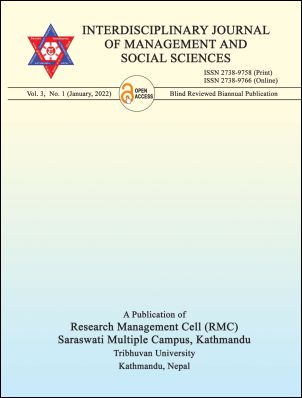Conceptualizing Social Exclusion from Hilary Silver’s Multidimensional Perspective
DOI:
https://doi.org/10.3126/ijmss.v3i1.50241Keywords:
exclusion, inclusion, inequality, perspective, povertyAbstract
Social exclusion as a concept evolved in the late twentieth century to analyze the structuralblockage of individuals. It started gaining momentum within a short two decade-period,and succeeded in overshadowing other issues of development and underdevelopment discourses. Eventually, a context was emerged in which different societies are labeled or analyzed in terms of their exclusionary or inclusionary practices. Attempts of analyzing societies from social exclusion theories were highly popular, but most of the scholar’s focus were limited either to a single or a few dimensions of social exclusion. It is felt that the diverse and stratified society needs multidimensional perspective for being properly analyzed. This paper, therefore, aims to review pertinent theories of social exclusion, and synthesizes the main arguments from them. After reviewing a dozen of scholastic writings, this paper gives hand to Hilary Silver’sidea of multidimensional perspective in analyzingthe social exclusion. It concludes that the multidimensional form and nature of social exclusion analyzed more convincingly by Hilary Silver is more applicable to portray the picture of type and intensity of social exclusion in Nepal.

